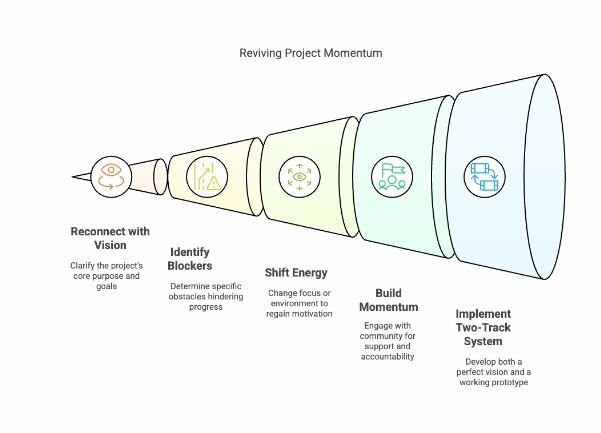
Balancing Excitement, Perfection, and Reality
I spend a lot of time in early phases of ideas getting very, very excited about what I am going to build. I think of domain names, design styles, tech stacks and vibes—that energetic feeling like I got something here and I can't let it go.
The Rush of Discovery
You know that feeling. You're just hyper-focused. Your mind is racing yet it's calm and onto something. Every spare moment becomes a canvas for thinking through features, imagining user flows, picturing that perfect shade of green for your brand.
You catch yourself 3 hours later, knowing sleep isn't coming anytime soon because this idea, THIS idea, might be the one. The possibilities feel endless, electric, almost surreal—like you're standing on the edge of creating something that could change everything.
The Perfectionist Trap
Well, almost everything becomes a quest for perfection. Every decision feels monumental:
- The framework choice has to future-proof your app
- The database schema needs to scale flawlessly
- Even that shade of green has to convey the exact emotion and mood you want
You can't mess this up. This has to be maintainable. This has to be right.
When Reality Crashes In
Then reality hits. That elegant architecture you sketched out? It's already getting messy three files in. Your beautiful, clean code ideals crash headfirst into callback disaster. What started as a crystal-clear vision becomes a tangle of compromises, workarounds, and "I'll fix this later" comments.
The perfectionist in you screams at every quick fix, while the pragmatist whispers "just make it work."
These blockers slow your progress, and they may come after a couple days or weeks or months of work. Sometimes you leave a project alone, come back with new vigor, but decide to rebuild—and the perfectionist cycle starts again.
The Project Revival System
Let's break through these blockers with a practical framework:
1. Reconnect with the Core Vision
- Spend 15 minutes writing about why you started
- Review your initial sketches and notes
- Remind yourself of the problem you're solving
2. Break Down the Wall
- Identify the exact blocker: technical, creative, or motivational?
- Time-box one small, achievable task (30 minutes max)
- Give yourself permission to write imperfect code
3. Shift Your Energy
- Work on the fun parts first
- Switch to design if coding is blocked (or vice versa)
- Change your environment—coffee shop, park, different room
4. Build Momentum Through Community
- Share your progress on Twitter/GitHub
- Find an accountability partner
- Join a community of builders
5. Implement the "Two-Track System"
- Track A: Perfect vision (document it, but don't build it yet)
- Track B: Working prototype (embrace the duct tape)
Remember: Progress over perfection. Every successful project started with a "good enough" version 1.0.